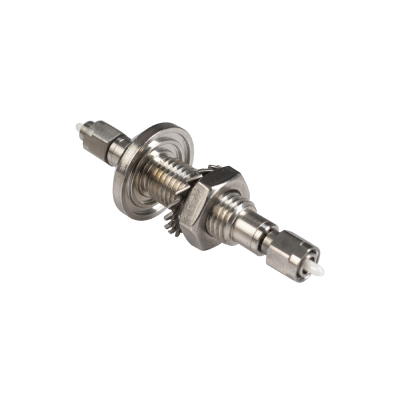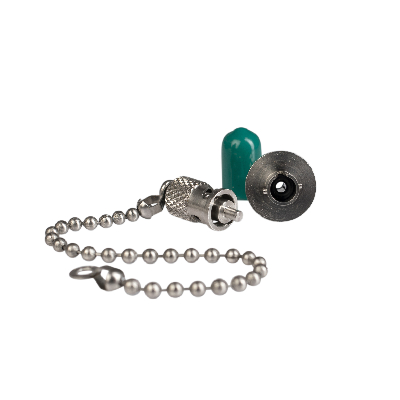OpticalFiber
Using fiber optics in the military sector
SEDI-ATI offers disposable ultra-lightweight and compact deployable fiber optic spools to be directly mounted onto unmanned ground vehicles.
Majorconstraints
The solution must demonstrate
- An ease of implementation,
- Compactness and lightness to be embarked on unmanned ground vehicles,
- A high bandwidth allowing video transmissions and piloting commands,
- A very small bending radius of the cable and a good mechanical resistance compatible with an intensive use on the ground.
Thechallenge
Develop an effective, reliable, safe, and rapid mine clearance alternative to the existing manual techniques and to radio frequency controlled robots.
100 millions landmines still active in the grounds
As of today, there is no credible estimate of the total number of mines in the ground worldwide, however their number might still exceed 100 million across 50 states and 3 territories. Also, despite the Ottawa Treaty aiming at eliminating anti-personnel landmines around the world, and signed by 164 countries, there would be 2 to 5 million new mines continuing to be laid every year.
Live landmines can lie in the ground for decades. Depending on their type, they can be triggered by pressure (from above or on a wire), movement, sound, noise (random electrical voltages), magnetism, vibration, and radio or other signals.
According to the Landmine Observatory, in 2020 there were 19 victims per day compared to 10 per day in 2013. 80% of the victims in 2020 are civilians, half of whom are children.
Our spool equipped a robot that paraded on July 14, 2019 on the Champs-Elysées
We are also very proud at SEDI-ATI to have contributed to the 14 July 2019 parade on the Champs-Elysées in Paris where the French Army showed fiber-guided unmanned land robots equipped with our fiber spool solution to communicate with the operator.
Relive that event by watching this nice video on our YouTube channel.
A remote neutralization without RF signals
Detecting and neutralizing landmines thanks to robots is the ideal solution to improve operational performance and increase the safety of human deminers by distancing them from the threat.
The major technical challenge for safe unmanned robots in the detection and clearance of landmines is having the ability to remotely operate them at large distances (> 300 m) without any radio frequency [RF] signal that might interfere with another signal and hence potentially trigger the explosion of the landmine.
In addition to having immunity to electromagnetic interference [EMI], the perfect solution requires high bandwidth to support real-time signal processing (from several sensors) and decision-making.
Our offer
SEDI-ATI has designed a range of disposable and lightweight fiber optic spools for the guidance of unmanned vehicles.
The spool, also called “tape”, is directly mounted on the UGV (Unmanned Ground Vehicle) and is connected by its deployable end to the control station. It is by moving that the robot will unwind the fiber. No traction is then exerted on either the fiber nor on the vehicle.
These spools allow for rapid deployment in the field of fiber-guided vehicles, and over long distances of up to 1 km.
The 250 µm fiber is reinforced with a 350 µm diameter coating for optimal ruggedness.
Another advantage of this solution is that the optical cable can be dumped on the minefield, which allows to shorten the demining missions since it is not necessary to rewind the cable. The concept: 1 mission = 1 spool.
SEDI-ATI solution has already been deployed in airports for security checking of unattended luggage or parcel bombs, in refinery plants where RF signals are prohibited, in nuclear or mining plants, pipelines, tunnels, and sewerage systems, where RF signals cannot be transmitted.
SEDI-ATIsolution
The original solution from SEDI-ATI is relaying on a proprietary designed spool, using an ultra-compact (max. 94 mm x Ø80 mm) and disposable optical fiber. The low weight of such a spool (<340 g for 1 km of fiber) allows for its installation on board the robot itself. The fiber deploys as the robot moves, avoiding any traction on the fiber. As a consequence, low-size (250 or 350 µm) and low-cost fibers can be used and left on the field once the mission is over.
Different lengths of fiber can be offered (from 300 m to 1 km), depending on the mission requirements. This concept of “one spool for one mission” eliminates the need to retrieve the cable, thus allowing for greater responsiveness in the field and shorter missions.
Advantagesof the SEDI-ATI solution
- Natural immunity to electromagnetic interference,
- Low cost and easy to install on the robot,
- Optical communication is never lost between the operator and the robot, even underground or in a shielded space,
- Up to 1 km of fiber can be unwound without traction and without the risk of getting twisted on tortuous paths,
- Time-saving with the “one spool = one mission” concept: no need to rewind the optical cable, it can be easily detached and left on the field.
Related products
Disposable fiber-optic spool for Unmanned Ground Vehicles [UGV]
The RBOB-UGV fiber optic spool is ideal for remotely controlling ground unmanned vehicles that have to operate in conditions where it is dangerous or impossible to have an onboard human presence, and where radio frequency signals are not permitted.
M10-thread fiber-optic feedthrough for vacuum and pressure up to 600 bar
The KTRAV-M10 reconfigurable hermetic fiber-optic feedthroughs are suitable for vacuum and pressure applications up to 600 bars. They ensure a high level of hermeticity better than 10-10 mbar.l/s.
M12-thread fiber-optic feedthrough for vacuum and pressure up to 1000 bars
The KTRAV-M12 hermetic fiber-optic feedthroughs are suitable for vacuum and pressure applications up to 1000 bars. They ensure a high level of hermeticity better than 10-9 mbar.l/s.
Threaded hermetic adapter up to 30 bars
The KTRAV-IP series is a hermetic adapter for pressure applications up to 30 bars.






